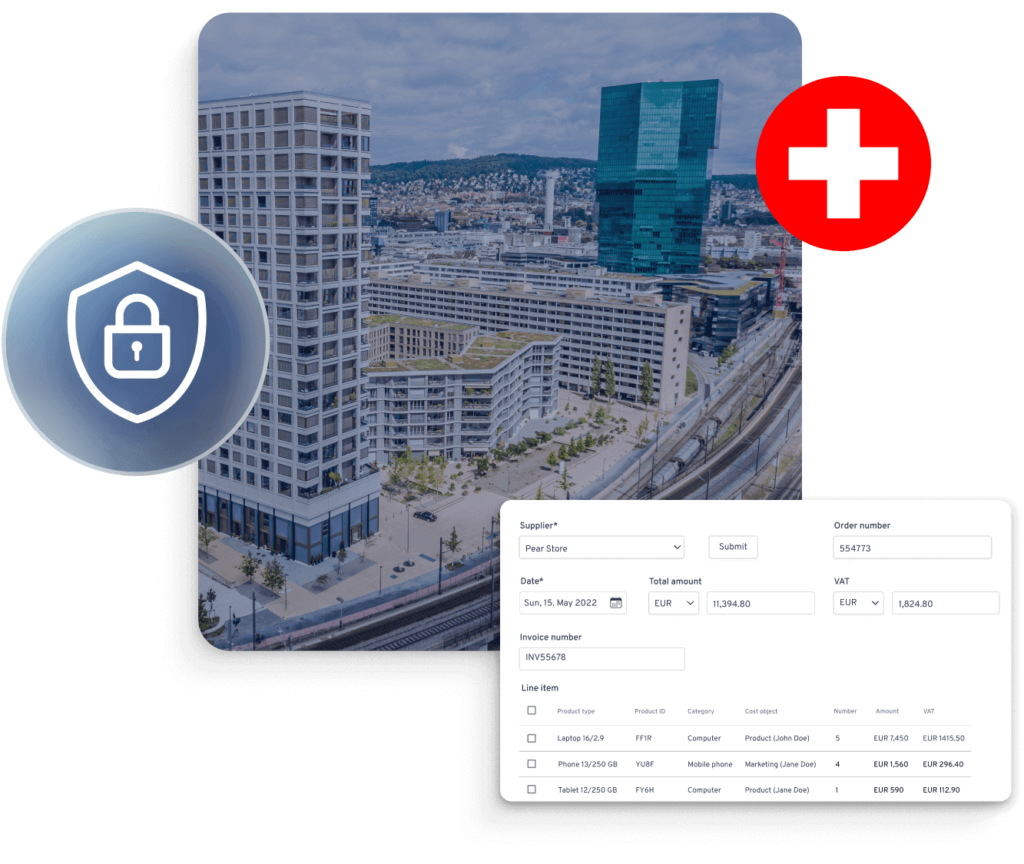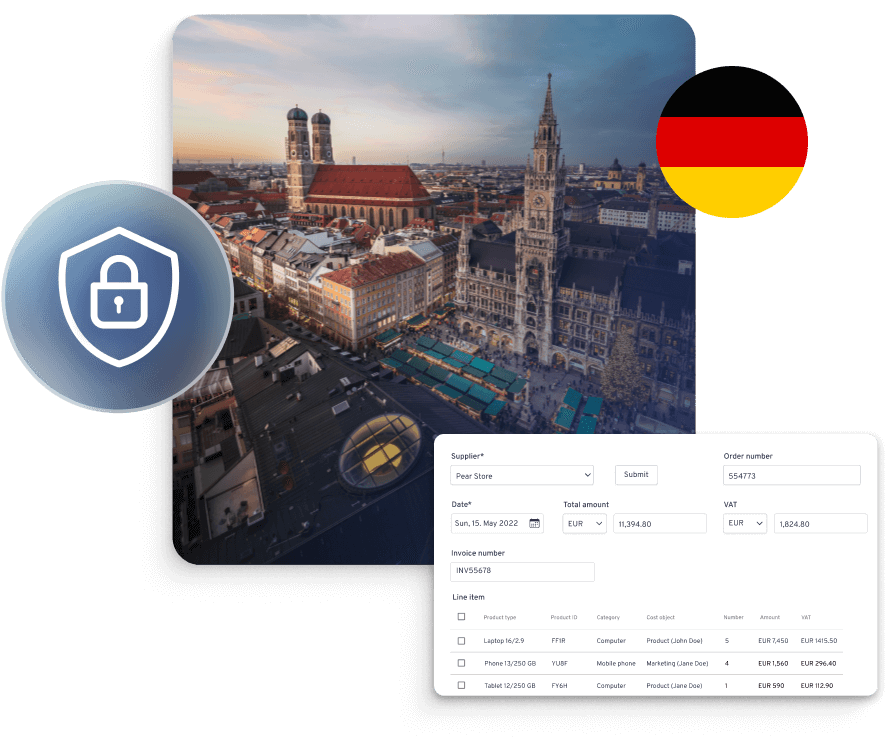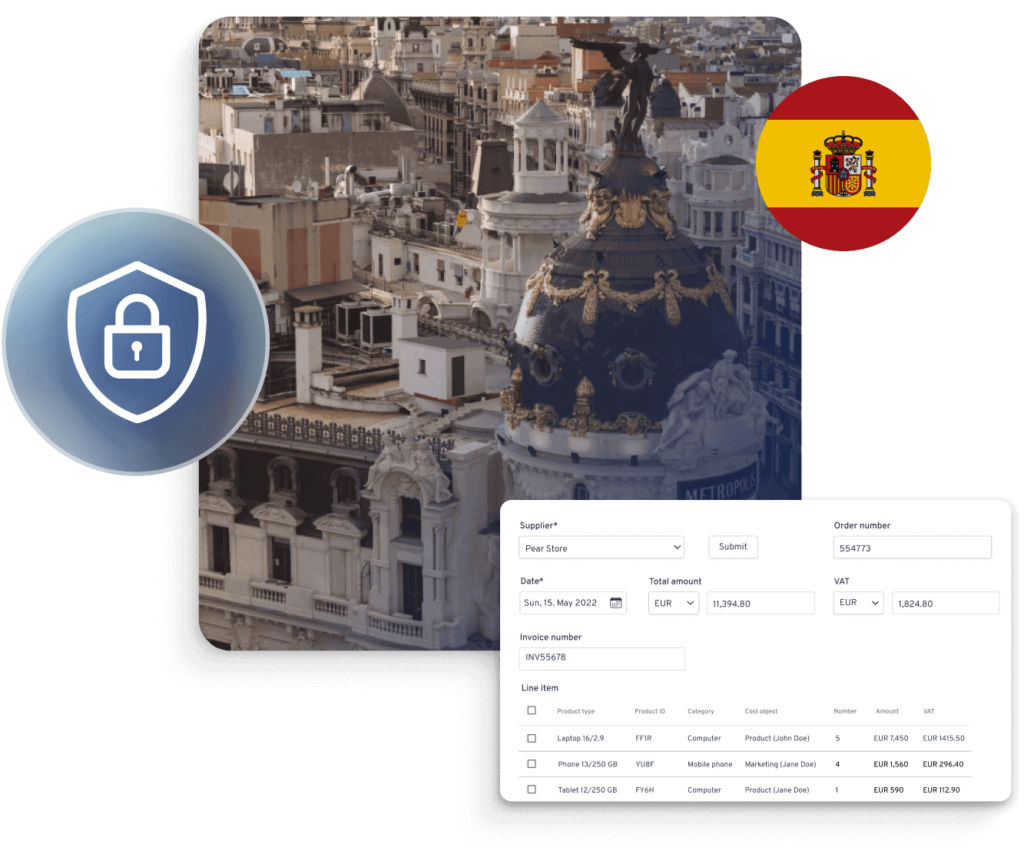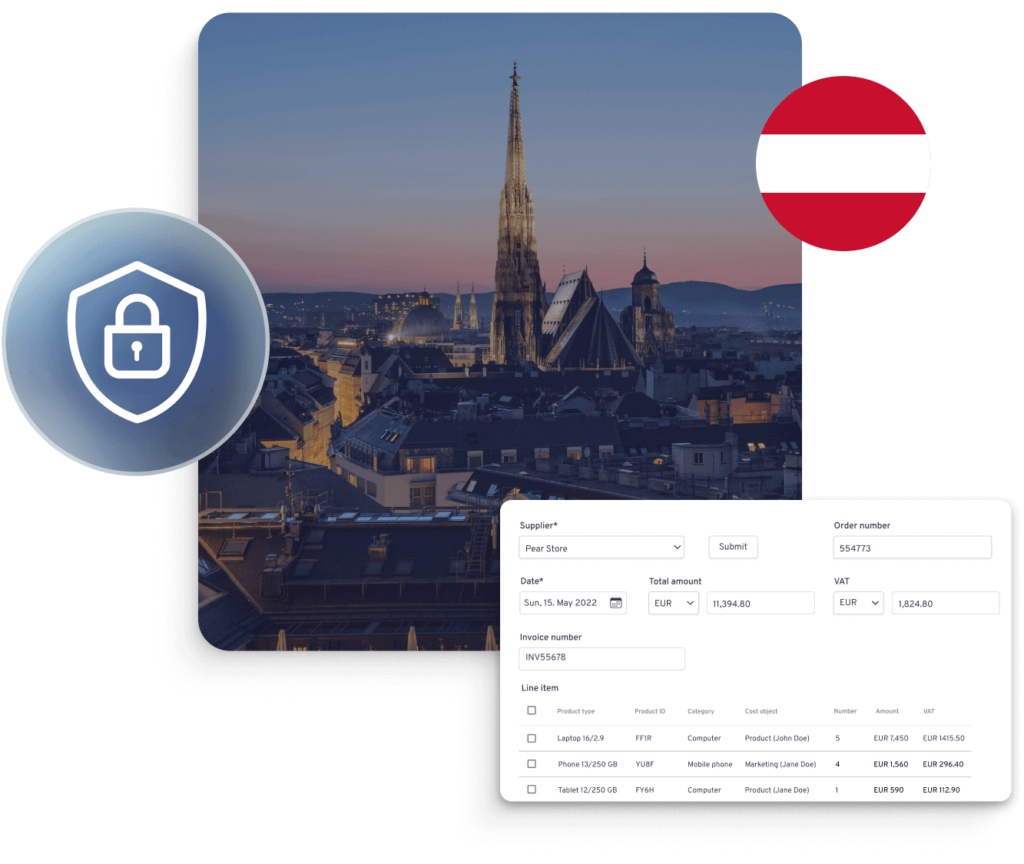This article will provide a comprehensive overview of VAT reclaim, covering its definition, importance, mechanics, key terms, global implications, and impact on businesses.
Understanding the concept of VAT reclaim
Value-Added Tax Reclaim is a process through which businesses can recover the VAT they have paid on their purchases. This means that when a business buys goods or services, it can later claim a refund for the VAT paid to the tax authority. The purpose of VAT reclaim is to avoid double taxation and ensure that businesses are not burdened with unnecessary tax costs.
When it comes to VAT reclaim, it is essential to understand the intricacies of the process. Businesses need to keep track of their purchases, ensuring that they have the necessary documentation to support their claims. This documentation includes invoices, receipts, and any other relevant paperwork that proves the VAT paid.
Definition of VAT reclaim
VAT reclaim can be defined as the process by which businesses, after incurring VAT on their purchases, submit claims to the tax authority to recover the VAT amount paid. This process involves careful record-keeping and adherence to the tax regulations set forth by the relevant authorities.
When submitting a VAT reclaim, businesses need to provide detailed information about the purchases made, including the supplier’s name, the date of purchase, the VAT amount paid, and the nature of the goods or services acquired. This information is crucial to ensure the accuracy and legitimacy of the claim.
The importance of VAT reclaim
VAT reclaim is important for businesses as it helps them reduce costs and improve cash flow. By reclaiming VAT, businesses can lower their overall expenses and increase their profitability. This additional cash flow can be reinvested in the business, allowing for growth and expansion.
Moreover, VAT reclaim provides an incentive for businesses to invest in their operations. By recovering the VAT paid on purchases, businesses can allocate more resources to research and development, improving their products or services and staying competitive in the market.
In addition to reducing costs and improving cash flow, VAT reclaim also plays a crucial role in encouraging international trade. By preventing tax barriers, businesses can engage in cross-border transactions without the fear of excessive taxation. This fosters economic growth and promotes global commerce.
It is worth noting that VAT reclaim is subject to specific rules and regulations that vary from country to country. Businesses need to stay informed about the tax laws and requirements in their respective jurisdictions to ensure compliance and maximize their VAT recovery.
In conclusion, VAT reclaim is a valuable process that allows businesses to recover the VAT they have paid on their purchases. By understanding the concept of VAT reclaim and adhering to the necessary procedures, businesses can reduce costs, improve cash flow, and promote economic growth through international trade.
Yokoy Compliance Center
Stay up-to-date with rules and regulations around per diem rates, mileage allowances, proof of receipt, and VAT rates, while Yokoy keeps you audit-ready across countries.

The mechanics of value-added tax reimbursement
Understanding how VAT reclaim works is crucial for businesses aiming to optimize their tax position. It involves knowing the process and requirements for reclaiming VAT effectively.
Value-Added Tax (VAT) is a consumption tax imposed on the value added to goods and services at each stage of production and distribution. While businesses are required to charge VAT on their sales, they are also entitled to reclaim the VAT they have paid on their purchases. This reimbursement can significantly impact a business’s cash flow and overall financial position.
How VAT reclaim works
The process of VAT reclaim typically begins with a business keeping track of all its purchases and the VAT paid on those purchases. This information is then compiled and submitted to the tax authority using the appropriate forms and documentation.
However, it is not as simple as just submitting the information. Businesses must ensure that they have accurate and complete records of their purchases, including invoices and receipts. These documents serve as evidence of the VAT paid and are crucial for the tax authority’s verification process.
Once the VAT reclaim application is submitted, the tax authority reviews the claim and verifies the accuracy of the information provided. This verification process may involve cross-checking the invoices and receipts against the business’s financial records. In some cases, the tax authority may request additional documentation or clarification.
If the claim is approved, the tax authority will refund the VAT amount to the business. The refund can be made through various methods, such as direct bank transfer or offsetting against future VAT liabilities.
The process of VAT reimbursement
The process of VAT reimbursement varies across countries. Some countries have a straightforward process, while others require businesses to adhere to specific regulations and documentation requirements.
For example, in the European Union, businesses can reclaim VAT through the electronic VAT refund system (eVAT). This system allows businesses to submit their refund applications electronically, making the process faster and more efficient. However, businesses must still ensure that they have the necessary supporting documents to accompany their application.
In other countries, businesses may be required to submit their VAT reclaim applications manually, either by mail or in person. This can be a time-consuming process, as it involves filling out physical forms and providing hard copies of invoices and receipts.
It is essential for businesses to familiarize themselves with the local VAT reclaim procedures to ensure a successful reimbursement. This may involve consulting with tax advisors or engaging the services of VAT specialists who can navigate the complexities of VAT reclaim on behalf of the business.
Furthermore, businesses should stay updated on any changes or updates to VAT regulations and reimbursement procedures. Tax authorities may introduce new requirements or modify existing ones, and businesses must adapt to these changes to avoid any delays or rejections in their VAT reclaim applications.
In conclusion, VAT reimbursement is a critical aspect of managing a business’s tax position. By understanding the mechanics of VAT reclaim and adhering to the necessary processes and requirements, businesses can optimize their cash flow and ensure compliance with tax regulations.
Check out our newsletter
Don't miss out
Join 12’000+ finance professionals and get the latest insights on spend management and the transformation of finance directly in your inbox.
Key terms in VAT reclaim
To navigate the world of VAT reclaim effectively, businesses must be familiar with some common terms and phrases used in this context.
When it comes to VAT reclaim, understanding the key terms and phrases is essential for businesses to accurately determine the VAT eligible for reclaim. Let’s take a closer look at some of the most common terms and phrases in VAT reclaim:
Common terms and phrases
1. Input VAT: Input VAT refers to the VAT paid by a business on goods and services purchased for its own use or for resale. It can be reclaimed by the business.
2. Output VAT: Output VAT is the VAT charged by a business on the goods and services it supplies to its customers. This VAT is collected by the business on behalf of the government.
3. Taxable Supplies: Taxable supplies are goods and services that are subject to VAT. These supplies are liable for VAT at the standard rate or any reduced rates applicable.
4. Exempt Supplies: Exempt supplies are goods and services that are not subject to VAT. Businesses cannot reclaim VAT on exempt supplies.
5. Zero-Rated Supplies: Zero-rated supplies are goods and services that are subject to VAT at a 0% rate. Although VAT is still applicable, businesses can reclaim the VAT paid on zero-rated supplies.
Understanding VAT reclaim jargon
In addition to the common terms and phrases, VAT reclaim also has its own jargon that businesses should familiarize themselves with. Here are some key jargon terms in VAT reclaim:
1. Tax Point: The tax point is the date on which VAT becomes due on a transaction. It determines the VAT period in which the transaction should be accounted for.
2. VAT Registration Threshold: The VAT registration threshold is the annual turnover threshold at which a business becomes liable to register for VAT. Once a business exceeds this threshold, it must register for VAT and can then reclaim VAT on eligible expenses.
3. Reverse Charge Mechanism: The reverse charge mechanism is a VAT accounting mechanism where the responsibility for accounting for VAT is shifted from the supplier to the customer. This mechanism is commonly used in transactions between businesses in different EU countries.
By understanding these jargon terms, businesses can navigate the intricacies of VAT reclaim more effectively and ensure compliance with VAT regulations.
VAT reclaim in different countries
VAT reclaim practices vary across countries, and it is important for businesses operating internationally to understand the specific regulations in each jurisdiction.
VAT reclaim in the European Union
The European Union (EU) has a harmonized VAT system that allows businesses to reclaim VAT incurred in any EU member state. However, businesses are required to adhere to specific rules and documentation requirements to claim VAT successfully within the EU.
You can learn more about VAT rates and how Yokoy supports automated VAT reclaims in our Compliance center.
VAT in Germany
German government levies VAT rates for exchange of goods and service. There are three different VAT rates relevant for expense management:
- Standard VAT – 19% for most of the goods and services
- Reduced VAT – 7% for Health care, books, water supplies, Food items and a lot more
- No/Zero VAT – 0% for VAT exempted goods and services
In addition to these VAT rates, Germany also levies ”Special” VAT rate for certain goods and services such as for:
- Good and services falling under the 30/70 Rule
- Gifts >35€
- Gifts <35 €
Compliance in Germany
Stay up-to-date with rules and regulations around per diem rates – including the midnight rule and 3-month rule, mileage allowances, proof of receipt, and VAT rates in Germany, while Yokoy keeps you audit-ready.

VAT in Spain
The Spanish government levies VAT rates for exchange of goods and service. Companies should report VAT to tax authorities digitally via SII. here are four different VAT rates relevant for expense management:
- 21% standard VAT rate for all goods and service
- 10% intermediary VAT rate
- 4% reduced VAT rate
- 0% VAT rate
Compliance in Spain
Stay up-to-date with rules and regulations around per diem rates, mileage allowances, proof of receipt, and VAT rates in Spain, while Yokoy keeps you audit-ready.

VAT in Austria
The Austrian government levies VAT rates for exchange of goods and service. There are four different VAT rates relevant for expense management:
- Standard VAT – 20% for most of the goods and services
- Reduced VAT – 13% for art works, sporting event, delivery of living animals, plants
- Reduced VAT – 10% for accommodation, Transportation
- No VAT – 0% for VAT excluded goods and services
Compliance in Austria
Stay up-to-date with rules and regulations around per diem rates, mileage allowances, proof of receipt, and VAT rates in Austria, while Yokoy keeps you audit-ready.

VAT reclaim in non-EU countries – Switzerland
Non-European Union countries may have different VAT reclaim procedures and requirements. Businesses operating in these jurisdictions must familiarize themselves with the local regulations to optimize their VAT reclaim opportunities.
Swiss government, for example, levies VAT rates for exchange of goods and service. There are four different VAT rates relevant for expense management:
- Standard VAT – 7.7%
- Reduced VAT – 3.5%
- Reduced VAT – 2.5%
- No/Zero VAT – 0%
Changes soon to come:
The Swiss Federal Tax Administration announced new VAT rates which will be effective from 1st January 2024. The following new VAT rates will be applicable for Switzerland and the municipalities of Lichtenstein:
- Standard Rate: 8.1% (from 7.7%)
- Reduced Rate: 2.6% (from 2.5%)
- Accommodation rate: 3.8% (from 3.7%)
Compliance in Switzerland
Stay up-to-date with rules and regulations around per diem rates, mileage allowances, proof of receipt, and VAT rates in Switzerland, while Yokoy keeps you audit-ready.

The impact of VAT reclaim on businesses
VAT reclaim can have significant financial and strategic implications for businesses.
Financial implications of VAT reclaim
Reclaiming VAT can lead to substantial savings for businesses. By minimizing the VAT burden on purchases, businesses can increase their profitability and competitiveness. VAT reclaim also improves cash flow by reducing the upfront VAT payment on expenses.
Strategic benefits of understanding VAT reimbursement
Having a thorough understanding of VAT reclaim enables businesses to proactively manage their tax position. It allows them to identify VAT savings opportunities, streamline processes, mitigate risks, and ensure compliance with VAT rules and regulations.
In conclusion, VAT reclaim is a crucial aspect of managing business expenses and optimizing tax position. Understanding the concept, mechanics, and key terms associated with VAT reclaim is essential for businesses seeking to maximize their VAT savings.
Furthermore, being aware of the different VAT reclaim practices in various countries is vital for international businesses. Ultimately, VAT reclaim can have a significant impact on the financial well-being and strategic direction of businesses, making it a subject worthy of exploration and understanding.
Blog article
Reclaim VAT Automatically: How Yokoy Uses AI to Simplify VAT Recovery
Reclaiming foreign VAT (Value Added Tax) is something that’s usually complicated and a manual task. Read here how Yokoy automates VAT recovery with AI.

Vishnuram Muthuraman,
Product Marketing Manager